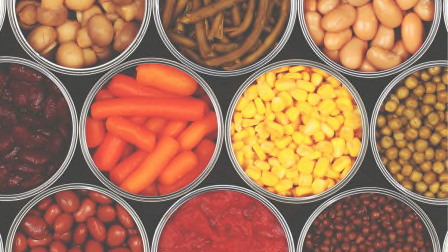Frozen vs. Canned Vegetables and Fruit: Which Is Healthier?
Both can be nutritious alternatives to fresh, but there are some key differences

Both canned and frozen fruit and vegetables can be great options, especially when fresh produce is out of season or too expensive. But there are some key differences between the two preservation methods that give frozen produce a slight edge.
A package of frozen fruit or vegetables typically contains just the produce itself, blanched and/or flash-frozen without added ingredients like salt, sugar, or sauce. “Fruits and vegetables are packed with nutrients, and that doesn’t change when they are frozen,” says Amy Keating, RD, a CR nutritionist.
Canned produce, on the other hand, more often has added salt or sugar. Vegetables are frequently packed in brine (salt water), and fruit is often canned in syrup or sweetened juice that can contain high-fructose corn syrup or other types of added sugars. We’ve seen some that pack as much as 14 grams per serving. To make healthier choices, check labels carefully. Look for fruit packed in 100 percent juice, and check the sodium content of canned vegetables or look for “no salt added” on the label. You can also reduce sodium by draining and rinsing veggies like beans before use.
The canning process can also lead to some nutrient loss—especially of vitamin C, which is heat-sensitive—but other vitamins, fiber, and most minerals tend to remain intact. And canning can actually enhance some antioxidants, such as beta-carotene. Carrots and pumpkins, for example, deliver a more concentrated amount of antioxidants when they’re canned.
Editor’s Note: This article also appeared in the November/December 2025 issue of Consumer Reports magazine.



















